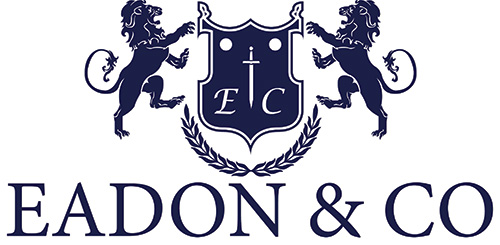Pension drawdown, also known as ‘flexi-access drawdown’ (FAD), is a method of accessing your pension savings in retirement, which provides the flexibility to choose how and when you withdraw the funds in your pot.
In years gone by, most people tended to use the pension they’d saved up to buy an annuity, which granted them a guaranteed income for the rest of their life, and this remains a common option.
But drawdown has seen a surge in popularity in recent times, after a period of low interest rates, and subsequently annuity rates, resulting in the Pensions Freedom Act coming into force in 2015 – giving savers the opportunity to take a more flexible, independent approach to managing their money in their later years.
However, it’s important to note that with greater freedom does come a greater level of potential risk.
Pension income drawdown: What you need to know
Once you reach the minimum pension age of 55 – rising to 57 by 2028 – you’re eligible to begin withdrawing from your pension pot by moving your cash to a designated ‘pension fund’.
You can typically take up to 25% of your pension pot as a tax-free lump sum. The remaining 75% stays invested, which you can then access as and when you need to – but it’ll be subject to income tax (being added to your taxable income for that year) and when it’s gone, it’s gone.
The beauty of a drawdown plan is you can choose how much income you want to take and when – so you could decide to a take regular income, withdraw lump sums as needed, or leave your pension invested for further growth.
And as with other investments, the value of your pension can go up or down depending on investment performance, so it’s important to monitor and adjust your investment strategy over time.
That’s why picking the right blend of investments in your drawdown fund according to your own needs and goals is so crucial. Generally speaking, an average pension holder will want a good mix of assets that can deliver steady growth over the long term, while being as resilient as possible in the face of stock market dips.
However, there’s a range of different drawdown investment solutions available – and with so many variables to consider, finding the right one for you can be a challenging task.
That’s why it’s key to seek independent financial advice when considering or choosing a drawdown scheme: a qualified adviser will be able to work with you to build a strategy that meets your requirements over the long term and evaluate the optimum level of risk for your situation.
Types of drawdown
The most common form of drawdown is known as ‘flexi-access drawdown’ (or ‘FAD’). This arrangement puts you in the drivers’ seat, giving you full flexibility in how and when to withdraw from your pension funds as a source of income.
However, before the rules were changed in April 2015, there was also something called ‘capped drawdown’, which limited the amount you could withdraw every year. These are no longer available as an option for new plans, but schemes started before the rules were altered are still operational.
For this reason, when most people talk about drawdown these days, they’ll likely mean flexi-access: its full title was originally there to differentiate it from capped plans!
What are the benefits of drawing down my pension?
Your investment remains yours: An obvious benefit of choosing a drawdown scheme is that you retain ownership of your hard-earned pension pot, whereas you’re effectively required to surrender the lot for good in return for an annuity.
As a result, a drawdown plan gives you the option to leave any remaining pension savings to a loved one if you suffer an early death. This amount will always be free of any inheritance tax (IHT) – and free from income tax in the event you pass away before 75.
On the other hand, unless you have a joint life plan in place with a named spouse or beneficiary – or a guaranteed annuity that’s set to make payments for a fixed term (typically five or ten years) – your annuity typically stops paying out once you’re no longer there to receive it, leaving nothing in the way of a legacy for others.
You can access it as you wish: You have control over how much you withdraw from your pension and when, letting you tailor your income to your own needs and tax situation.
So, if you need to spend a little more one year and a little less the next, there’s nothing stopping you – so long as you’re confident you can make your money last.
This also means that if you can manage to withdraw less one year, your tax bill will likely be lower for that period (which is a plus!).
Potential for further growth: Because your pension pot remains actively invested, there’s the potential for your savings to grow during retirement – depending on the performance of your investments, of course!
Are there any drawbacks to drawdown?
Vulnerable to poor investments: Since your pension fund remains invested, it’s exposed to the same market risk as any other type of investment.
And that means there’s always a risk that poor investment performance could reduce your retirement savings, potentially leading to a lower income than expected.
You only have a finite sum: It’s crucial to understand that by choosing drawdown over an annuity, you’re sacrificing security for flexibility.
Since you’re working with one finite pot of money, there’s a risk of outliving your savings if you withdraw too much too soon – especially if you’re lucky enough to have a long retirement.
Withdrawals are taxable: Since drawdown is considered a form of income after you’ve taken the first 25%, you’ll be liable to pay income tax on the withdrawals you make.
And this could push you into a higher tax bracket if you’re not shrewd about how you manage your access.
Drawdown in a nutshell
Pension drawdown offers a flexible – and potentially lucrative – way to manage your retirement income, but it also carries significant risks and responsibilities: the freedom to choose means the freedom to make unwise choices.
For that reason, a drawdown plan may not be suitable for everyone as annuities do offer very valuable guarantees for those seeking security above all.
As with any big financial decision, it’s critical to carefully consider your retirement goals and risk tolerance when weighing up whether a drawdown plan is the right fit for you.
It’s always best to seek assistance from a professional financial adviser to get the most out of your pension plan – and ensure your strategy is enabling you to access your hard-earned savings in a responsible and sustainable way.
Note:
This information is for education purposes only – it does not constitute financial advice and should not be acted upon without taking professional advice.
How we can help
Whether you’re only beginning to explore your retirement options or could use some insight on how to optimise your existing drawdown plan, we can help.
From initial set up and portfolio building to ongoing management and legacy planning, our experienced advisers are here to guide you every step of the way.
Get in touch for your consultation on how we can match you with the perfect retirement strategy for your needs:

